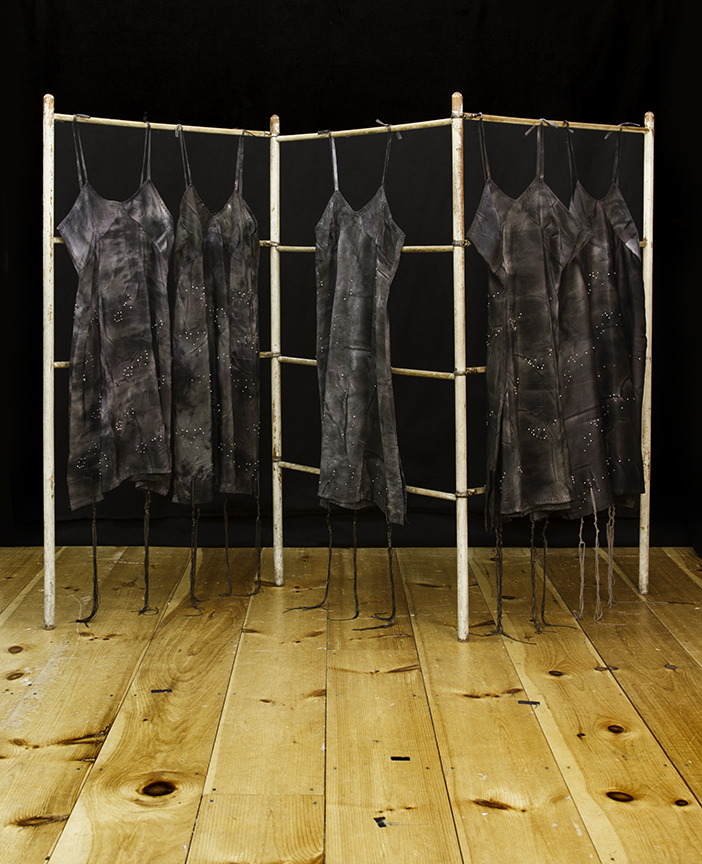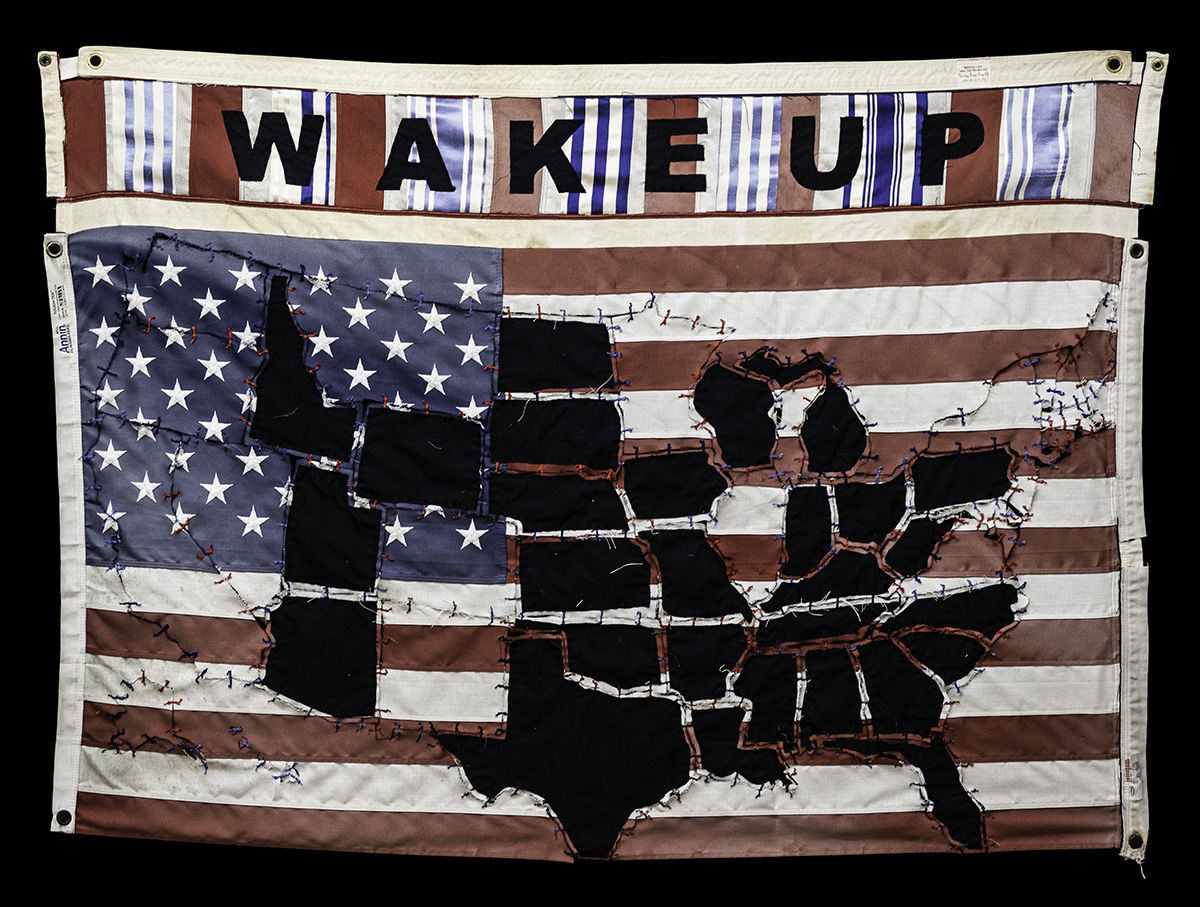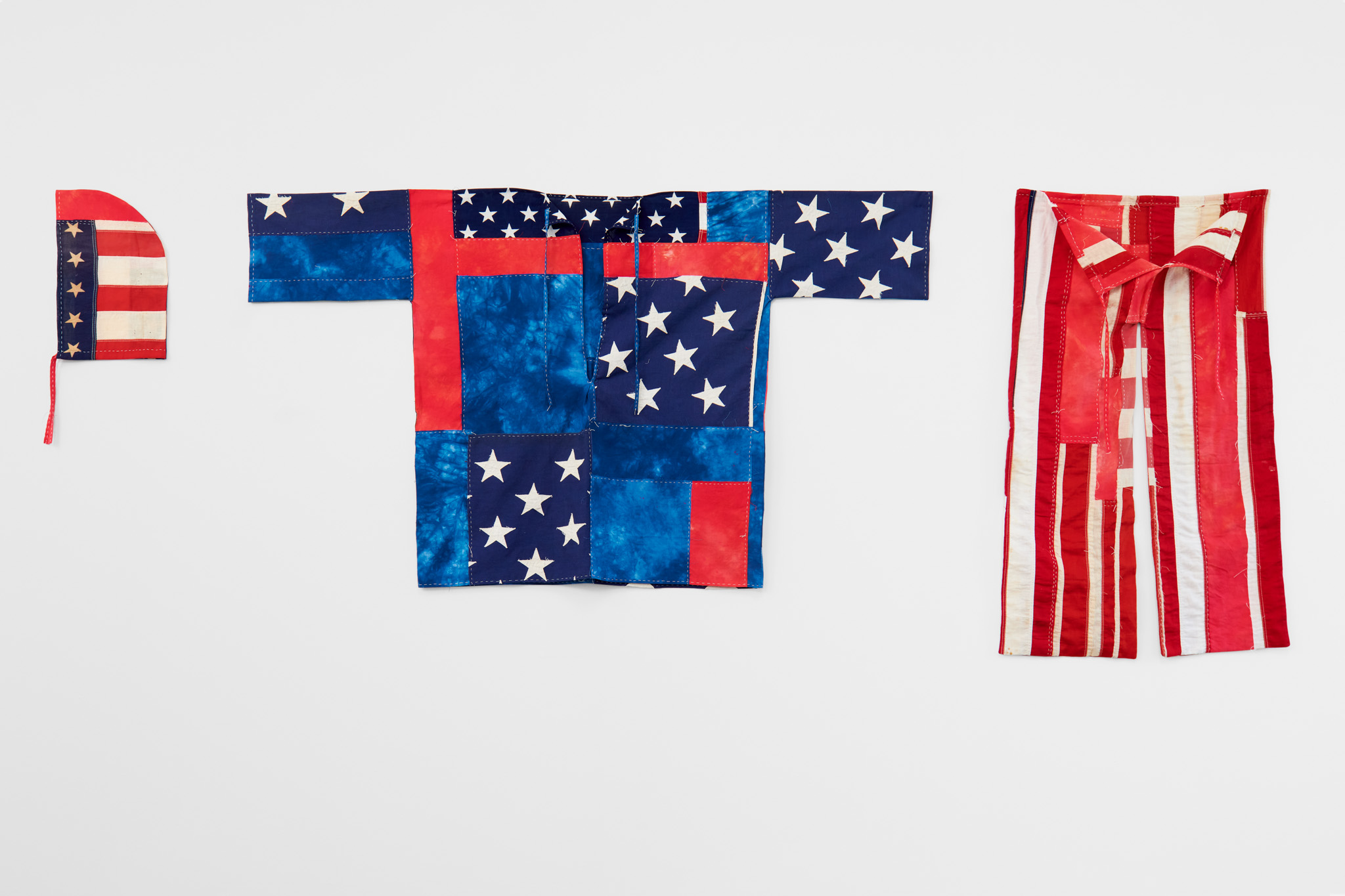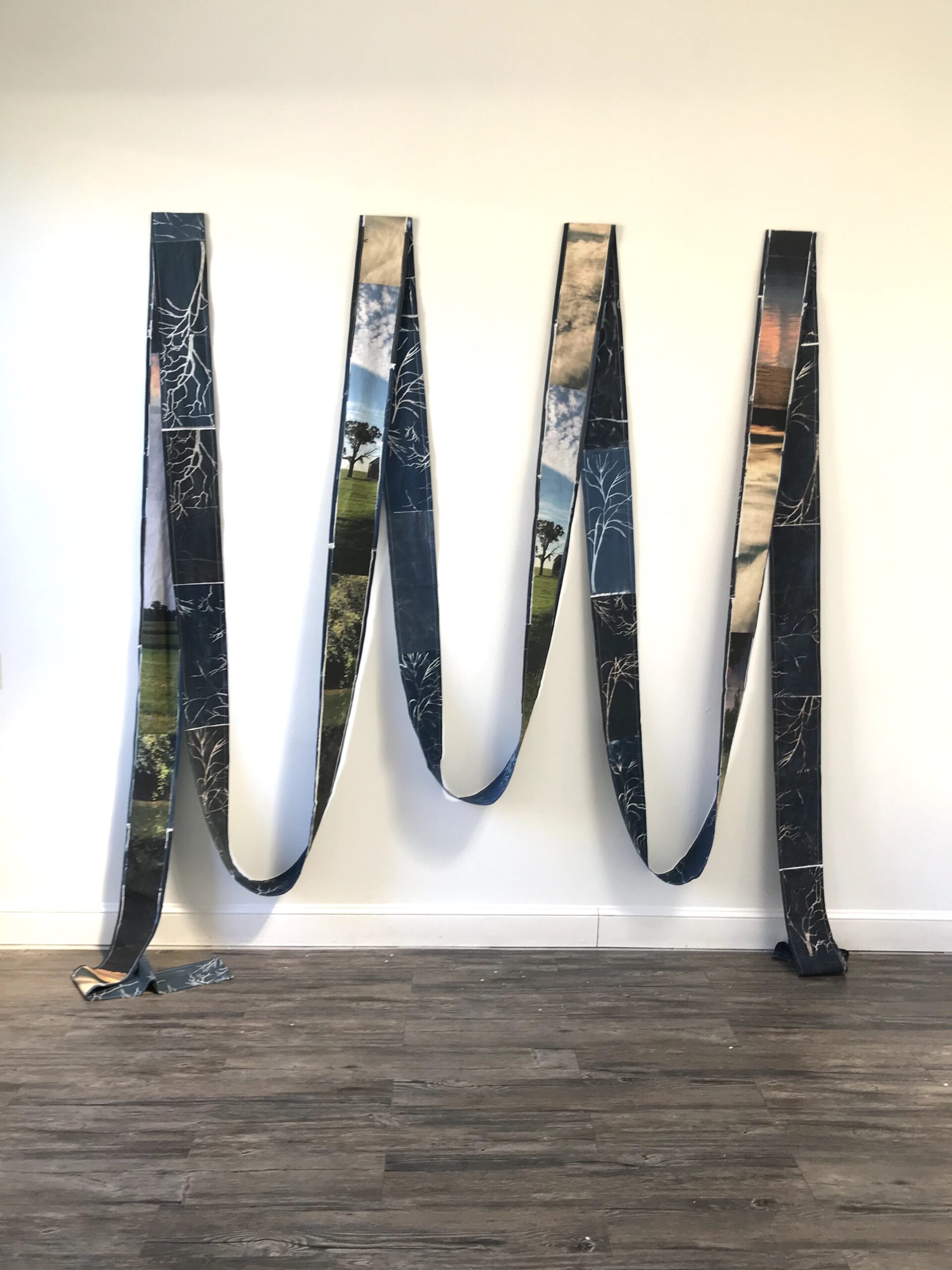Rachel Kanter
Immersion: Rebirth, 2010
Hand dyed silk, cotton, glass beads 68”x27”x27”
Many ceremonies have been written using a mikveh (ritual bath) for healing rituals. Immersion: Rebirth is a spiritual mikveh to be used in a healing ceremony when getting to an actual mikveh is not possible or desired. Its use marks that moment in time when you are alone with God. Prayers are recited that ask, plead and thank God for the strength and understanding to emerge from darkness renewed and to begin life again.
Rachel Kanter
Tallit Katan, 2013
Based on a vintage lingerie pattern from the 1940’s. Hand dyed silk, glass beads, vintage clothes hangers, vintage drying rack. 65”x48”x48”
The women are ready to get dressed. They put on their tallit katan, (ritual fringes) the color of the night sky with sparkling constellations of stars. They go out into the dark to celebrate Rosh Hodesh, the new Jewish month. The sky is always mysterious on these festive nights because Rosh Hodesh coincides with the new moon. It is a moon that is just beginning, a moon that will share its radiance as the month progresses. The women will rejoice under the sky of this hidden moon.
Rachel Kanter
Tachrichim 3 – Head Covering, Shirt, Pants, 2021
Commercial cotton printed with photographic images taken by the artist Head Covering: 32” x 9”, Shirt: 37” x 31”, Pants: 43” x 24”
In the Jewish tradition, tachrichim are simple, white shrouds used to bury the dead. They are traditionally hand sewn from white linen or cotton and are made without pockets, buttons or zippers. These plain, unadorned garments are free of any symbol of status or wealth and emphasize the belief in human equality. Tachrichim 3 - Head Covering, Shirt, Pants is a shroud for the earth. It is a look into our future and what will happen if we continue on this path of ecological destruction.
Rachel Kanter
Marking Time, 2017
Hand dyed cotton, found objects collected by the artist throughout her lifetime , vintage wooden crates 18” x 48” x 10”
Rachel Kanter
Tekiah, 2022
American flag that hung in front of Rachel’s home from 2020-2022, vintage American flags, vintage tallit (prayer shawls), vintage embroidery floss from Rachel’s grandmother, commercial cotton. 61” x 45”
Tekiah. Tekiah Gedolah. The shofar blast. A call. A cry. A shout. Wake up! Pay attention! The time is now! Tekiah is for my daughters. It is a map of where they can safely live with bodily autonomy, have the ability to make medical decisions for themselves and where they can live full Jewish lives. without government intrusion. Tekiah cries out: Access to abortion is a women’s issue, a human issue, and a Jewish issue.
Rachel Kanter
Laundry, 2018
Vintage drying rack, cotton, hand dyed embroidery floss 51” x 51” x 40”
“Laundry” is about washing clothes as a form of purification. The sexist, disparaging words that are embroidered on each of the women’s tallit katan (fringed garment) are in the process of being washed out and removed. The dye in the thread stains the undergarments just as these hurtful words that are said every day to women leave a mark on them. Ditsy, Bossy, Neurotic, Shrill, Nag, Diva, Frumpy, Prude, Dramatic, Bitchy, Slut, Hormonal.
Rachel Kanter
Tachrichim 1 – Head Covering, Shirt, Pants, 2021
Hand dyed cotton, vintage American flags. Head Covering: 32” x 9”, Shirt: 37” x 31”, Pants: 43” x 24”
In the Jewish tradition, tachrichim are simple, white shrouds used to bury the dead. They are traditionally hand sewn from white linen or cotton and are made without pockets, buttons or zippers. These plain, unadorned garments are free of any symbol of status or wealth and emphasize the belief in human equality. Tachrichim 1 - Head Covering, Shirt, Pants is a shroud for democracy. It emphasizes the fragility of America and it’s ideals.
Rachel Kanter
Community Wimple – See, 2021
Cotton, photographic images taken by the artist, solar reactive dye. 72"x60"
In Judaism, a traditional “wimple” is a ritual object that binds the Torah and holds it closed. It is made from the swaddling cloth of a newborn baby and is decorated with the names and dates of life events for generations of the family. It also includes a prayer of hope for the baby’s life. The wimple becomes a historical record. Community Wimple-See is a reinvention of a traditional Jewish wimple. It is used to bind a community together: physically, spiritually and through the act of truly seeing humanity’s destruction of the earth and the beauty that will be lost.







